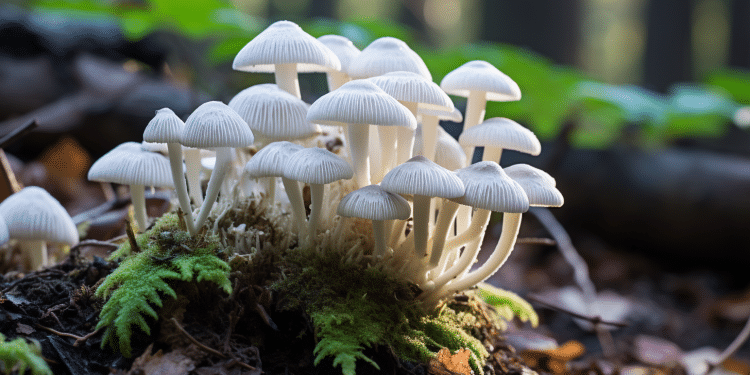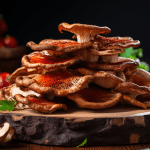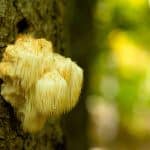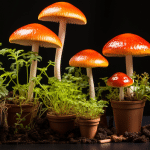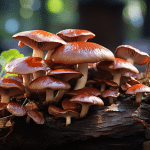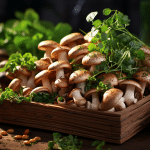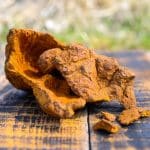Shaggy mane mushroom is easily identified, grows everywhere, and happens to be an idiosyncratic food of choice. In this post, I would like to share a few fun facts, and hopefully answer a few questions you have, about one of my favorite mushrooms to spot in the wild, Shaggy Mane — aka, Coprinus comatus. The Shaggy Mane is a very common wild mushroom, that you will frequently find growing in parks, lawns, and along trail sides on disturbed ground. It is very easy to identify, and it is immediately identifiable after getting the hang of it, making it the perfect beginner species. Of course, like with any mushroom, you have to be 100% confident in the mushrooms identification if you are planning to eat or present them to others.
What Does Shaggy Mane Mushroom Look Like?
The “Shaggy Mane” gets it is name because there is indeed an “undulating” look to the cap. Another common name is “lawyers wig”, and actually, the Latin name “comatus” is derived from “coma”, meaning hair.
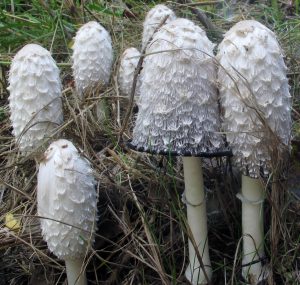
When young, the fruiting body is cylindrical and stands high above the soil — almost like a furry, egg-like shape at the end of a much thinner, smooth stalk. When cutting into the young species, the gills are initially white, tightly packed. As the mushroom grows older, the mushroom takes on a very different look.
The species of the genus “Coprinus” are known as the “inkcaps” due to the peculiar self-digesting characteristic, in which the fruiting bodies are slowly deteriorated to gooey black goo. This is also known as liquefaction.
The mushrooms had good reasons for such “self-destruction”. When a fruiting body is young, gills are packed tight, which is less than ideal for spore dispersal. This automatic digesting of the caps starts at the base of the gills, working up, forcing the caps to fold, opening up the gills, dispersing spores. Some of the spores are also dropped on the ground along with ink.
Where Can You Find Shaggy Mane Mushroom?
Shaggy manes are usually found growing on rich soils and in the summer and autumn in the grass. It seems to like disturbed soils around trails and roads as well.
So, if you are looking to spot this mushroom, keep an eye out around golf courses, urban parks, front lawns, and along trails. It may grow alone, but it more commonly fruits in larger groups, so if you spot one, chances are good that you will spot a whole slew.
Is Shaggy Mane Mushroom Edible?
As mentioned, shaggy mane mushroom is considered to be an edible in the culinary sense, a favorite of mushroom hunters. Due to its self-destructive mechanism, this mushroom is best enjoyed young, well before the caps begin to split off and become goopy. Even once harvested, it is best used immediately, since it does not remain fresh very long after it is picked. Shaggy mane can be preserved through dehydration, so you can actually find the dried version at certain supermarkets.
Should You Drink Alcohol with Shaggy Mane Mushroom?
A lot of people believe you should never consume this mushroom with alcohol, due to the possible interactions of alcohol and compounds found in mushrooms, which could lead to severe illnesses. This confusion comes from the fact that common muscaria, also known as “Coprinus atramentaria,” contains a compound called “coprine,” which can hinder how we metabolize alcohol.
When coprine and alcohol are combined, it causes comparatively serious symptoms such as nausea, vomiting, headache, weakness, etc. Coprine works the same way as Antabuse, the commercially available medication used to keep you from becoming seriously dependent on alcohol.
Basically, it is just like getting an instant, really nasty hangover. The reaction could also happen if you consumed alcohol within two to three days after eating the mushrooms that contained coprine. Fortunately, shaggy mane does not contain coprine — but it might be worth playing it safe and not drinking alcohol if you are planning on eating shaggy mane.
Shaggy Mane Look-a-Likes
Shaggy Mane is truly unique, but there are probably a few similarities that you should know about. The one most notable is the mushroom known as “the spitter,” also known as Chlorophyllum molybdite. This mushroom causes severe intestinal discomfort, such as vomiting, diarrhea, and other unpleasant things. It is the most widely consumed, mostly accidentally, toxic mushroom in North America.
It does not actually look much like a shamrock, but grows in areas like lawns and parks, so is worth knowing and can be mistaken for the latter by novices. The major difference is the way that the cap opens up like a parasol, instead of turning black. It also has the signature green spore print, which is a dead giveaway.
As always with wild mushrooms, you want to be 100% certain about the mushrooms identity before consuming.
Can You Grow Shaggy Mane Mushroom?
Shaggy mane is easy to grow, though not widely grown in North America, mostly because there is really no market for Shaggy Manes, either fresh or dried. If you are interested, we have made a video about growing Shaggy Mane that you can watch if interested. Shaggy Mane is a saprophytic mushroom that grows very well in compost, but it also grows on wood, as do a lot of other edible mushrooms. In China, it is commonly grown at cool temperatures on a wooden synthetic log. The mushrooms are harvested, dried out to avoid auto-digesting, and sold at grocery stores.
Whether you are growing them or finding them in the wild, shaggy mane is a fun, tasty food mushroom worth learning more about. I hope you learned something new, and as always, if you have questions, make sure you ask in the comments below.
